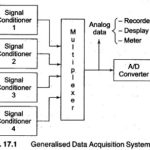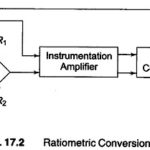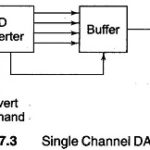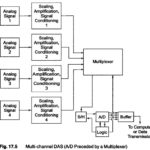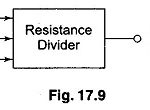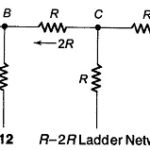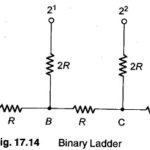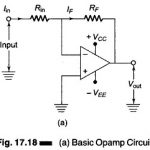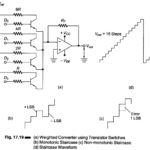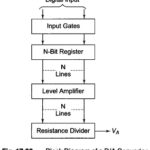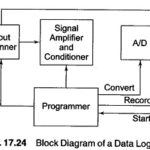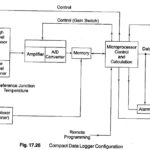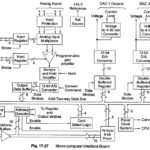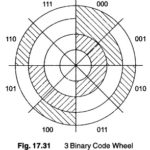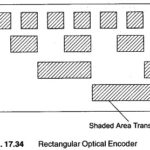Data Acquisition Articles:
Data Acquisition System: A typical Data Acquisition System consists of individual sensors with the necessary signal conditioning, data conversion, data processing, multiplexing, data handling and associated transmission, storage and display systems. In order to optimise the characteristics of the system in terms … (Read More)
Signal Conditioning of Inputs: Since all the data that have to be acquired, do not generally originate from identical sources, signal conditioning becomes necessary in some cases. A simple attenuator, is used to scale down the input gains, this is to match … (Read More)
Single Channel Data Acquisition System: A Single Channel Data Acquisition System consists of a signal conditioner followed by an analog to digital (A/D) converter, performing repetitive conversions at a free running, internally determined rate. The outputs are in digital code words … (Read More)
Multi Channel Data Acquisition System: The Multi Channel Data Acquisition System can be time shared by two or more input sources. Depending on the desired properties of the multiplexed system, a number of techniques are employed for such time shared measurements. Multi-Channel … (Read More)
Computer Based Data Acquisition System: If a large number of inputs are to be measured, some equipment is needed to measure them and display the results in a meaningful and operationally useful fashion. All this … (Read More)
Variable Resistor Network: The basic problem in converting a digital signal into an equivalent analog signal is to change the n digital voltage levels into one equivalent analog voltage. This can be achieved most easily by designing … (Read More)
Ladder Type Converter D/A: Looking into any load from the left side we always see a resistor R. Similarly looking from the right side for any load, one always sees a resistor 2 R. This impedance phenomenon is the key to … (Read More)
Binary Ladder Circuits: A Binary Ladder Circuits is constructed of resistors having only two values and thus overcomes the disadvantages of weighted resistors. The left end of the ladder is terminated in 2 R, as shown in Fig. 17.14. Assuming that all … (Read More)
Digital to Analog Converter Circuit Diagram: The basic Digital to Analog Converter Circuit Diagram using Op Amp is shown in Fig. 17.18(a). The input signal is applied to the inverting terminal of the opamp. In Digital to Analog Converter Circuit Diagram the … (Read More)
Weighted Converter Using Transistor Switches (Current Switch): Figure 17.19 (a) shows a circuit diagram of a weighted converter, using transistor switches. When the D bit is high (logic 1), it produces enough base current to saturate the transistor. When the D bit … (Read More)
DA Converter Working Principle: The resistive divider or ladder can be used as the basis for a DA Converter Working Principle. It is in the resistive network that the actual translation from a digital to an analog signal voltage takes place. … (Read More)
Data Loggers Function: The basic Data Loggers Function is to automatically make a record of the readings of instruments located at different parts of the plant. Data loggers measure and record data effortlessly as quickly, as often, and as accurately desired. Measurement … (Read More)
Data Logger Operation: For proper understanding of a Data Logger Operation, it is essential to understand the difference between analog and digital signals. For example, measurement of temperature by a milli voltmeter, whose needle shows a reading … (Read More)
Data Logger Summary: In general, a data logger is a comprehensive and highly advanced Data Logger Summary. It is made versatile and flexible, to render it suitable for widely varying applications, specific requirements being met simply by setting up a suitable … (Read More)
Compact Data Logger: A typical unit provides 60 channels of data in a 20 x 40 x 60 cm box weighing about 20 kg. Most manufacturers offer local or remote add-on scanners to expand to about 1000 … (Read More)
Sensors Based Computer Data Systems: This Sensors Based Computer Data Systems describes hardware/software which is commercially available at several levels of completeness, ranging from single board computer “front ends” to stand alone system and high level programming languages. Even the simplest and … (Read More)
Electromechanical AD Converter: Another area of application in which Electromechanical AD Converter is very important, involves the translation of the angular position of a shaft into digital information. (A very common application of this type of conversion is found in large … (Read More)
Types of Encoders in Digital Electronics: By the use of a digital code, it is possible to identify the position of a movable test piece in terms of a binary number. The position is converted into a train of pulses. This … (Read More)
